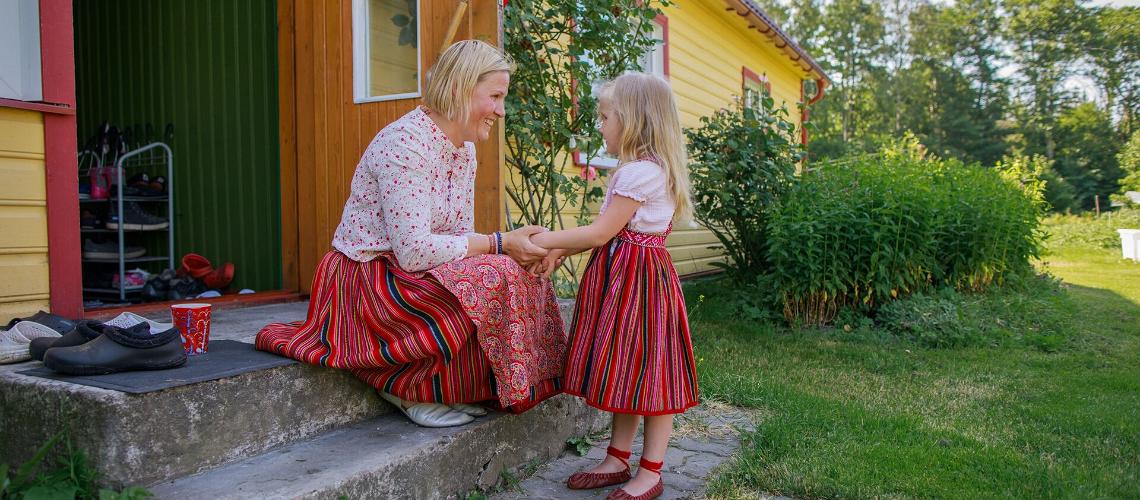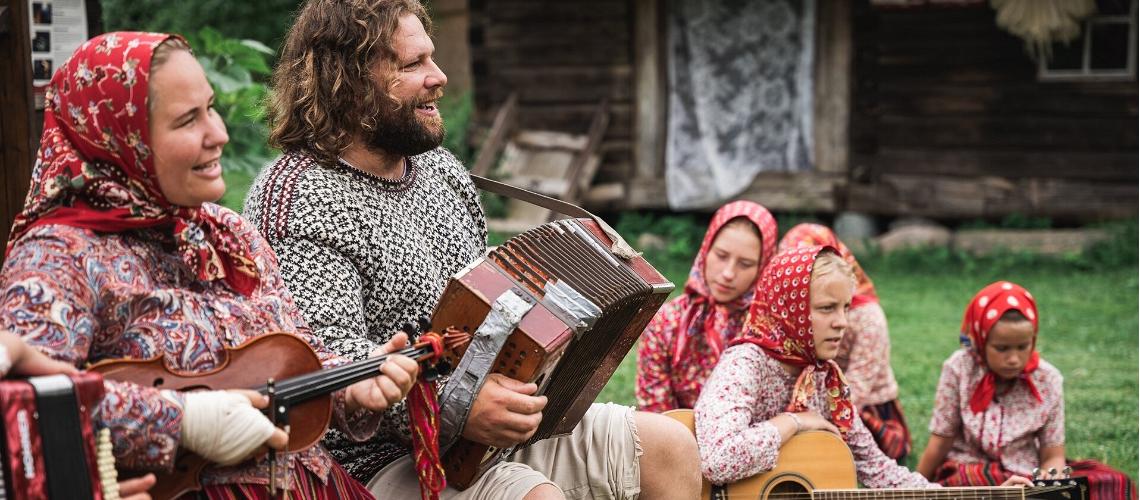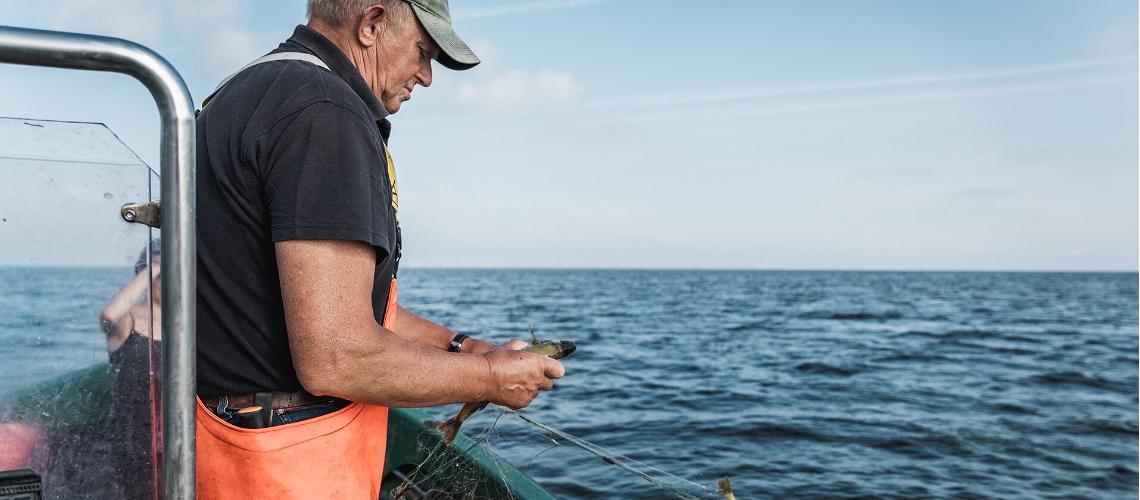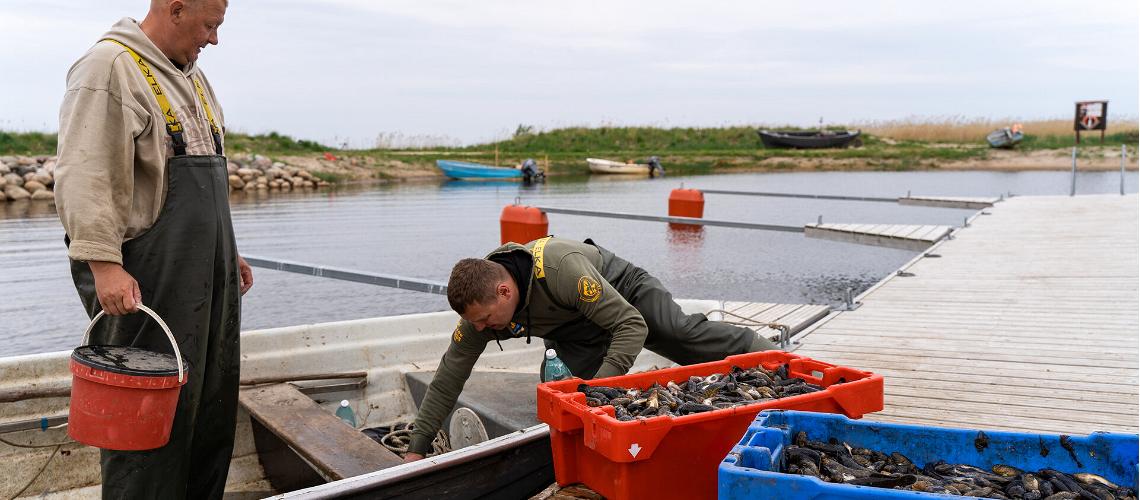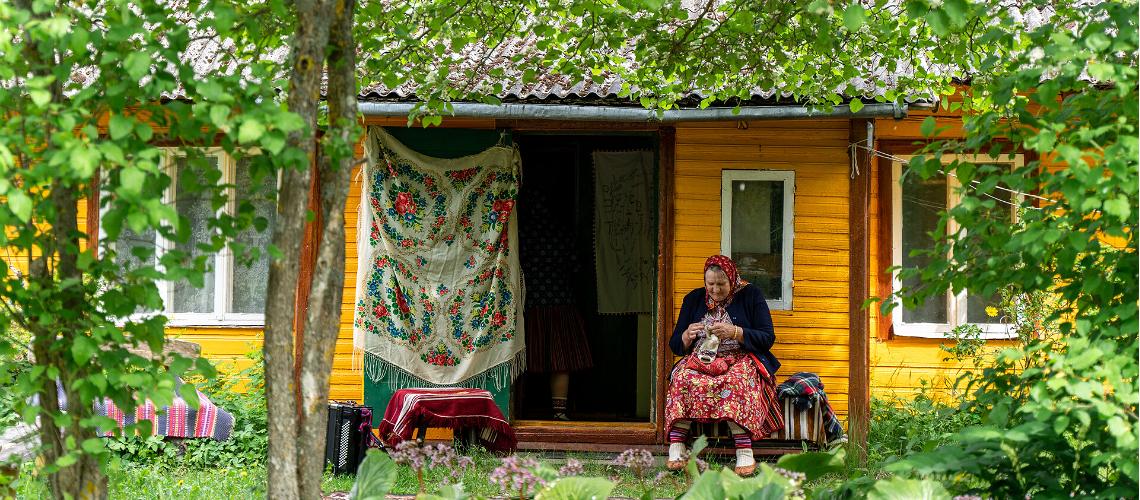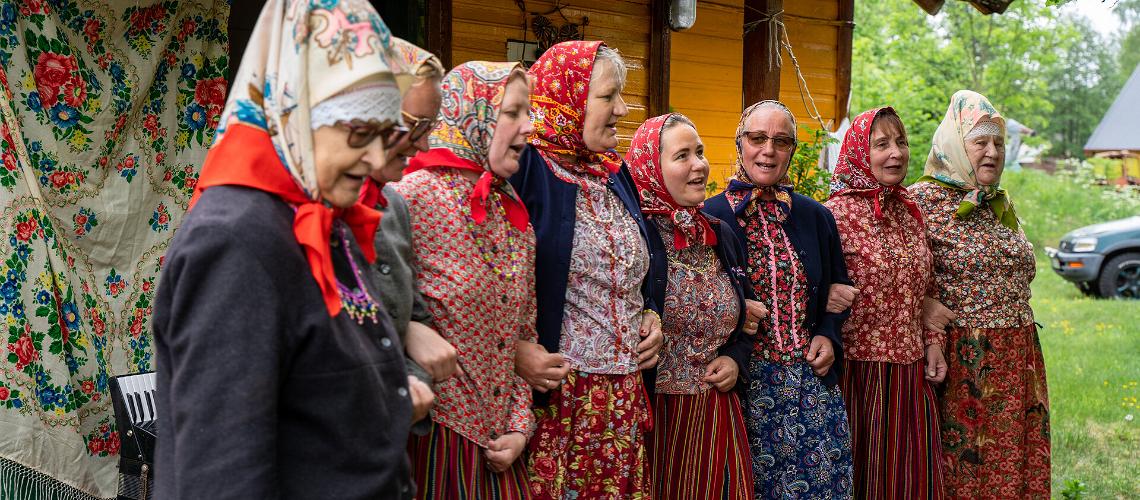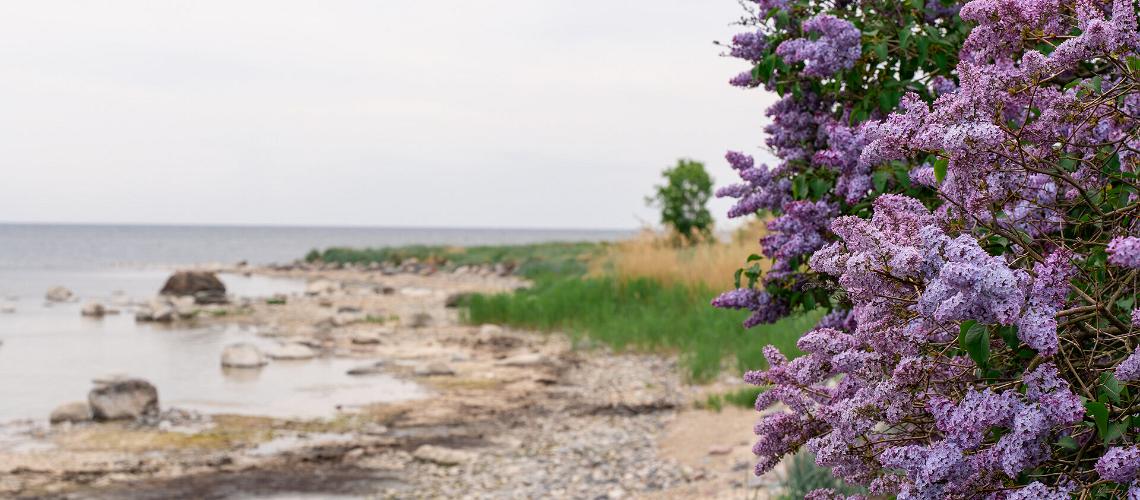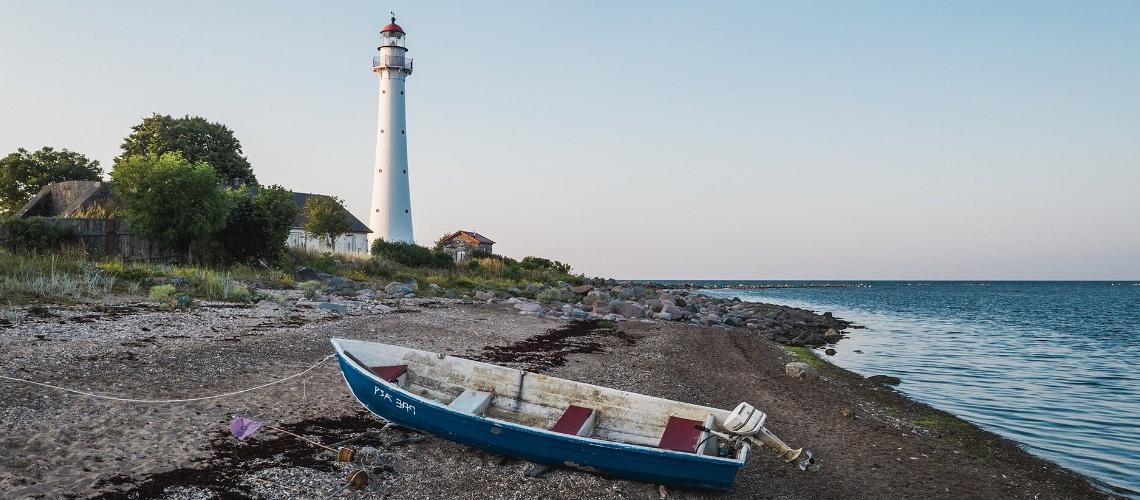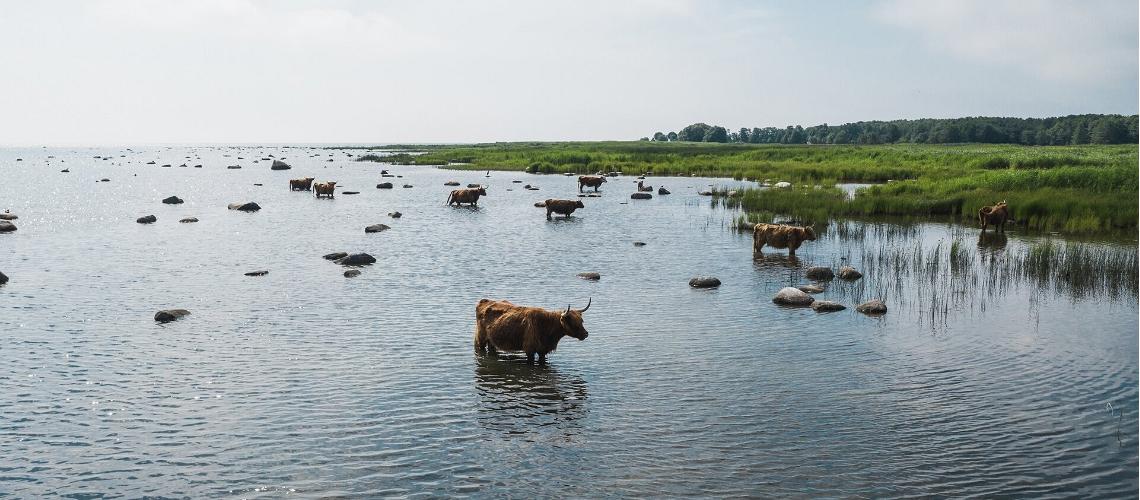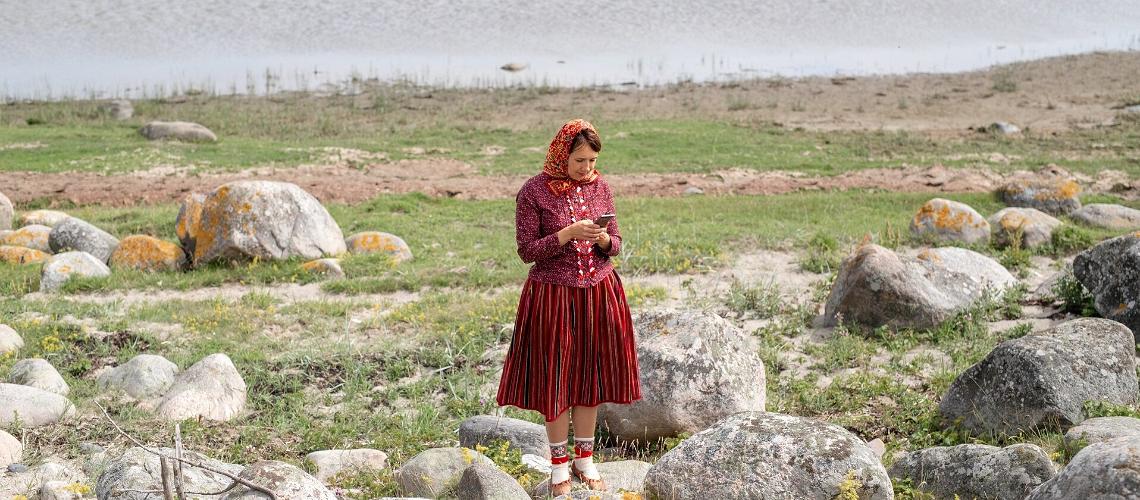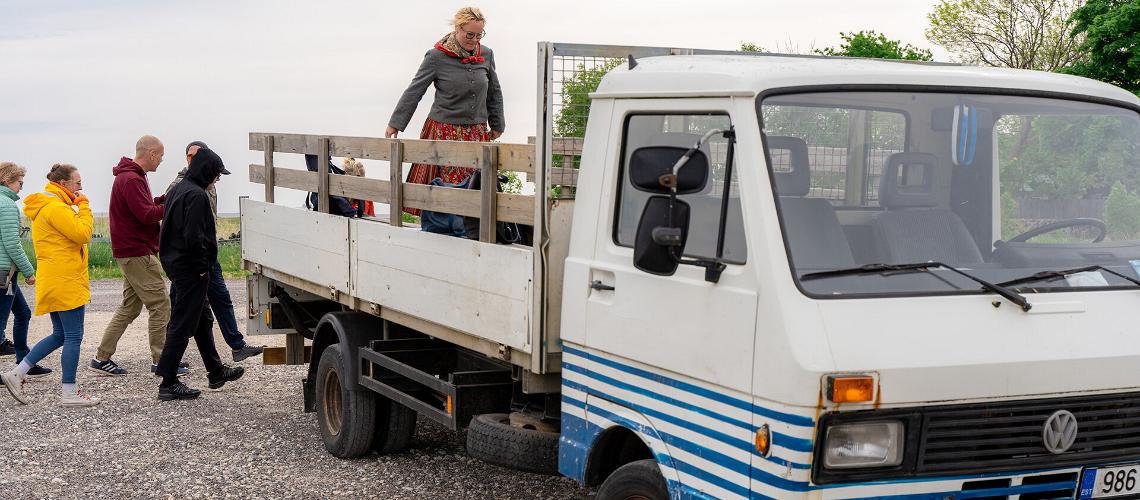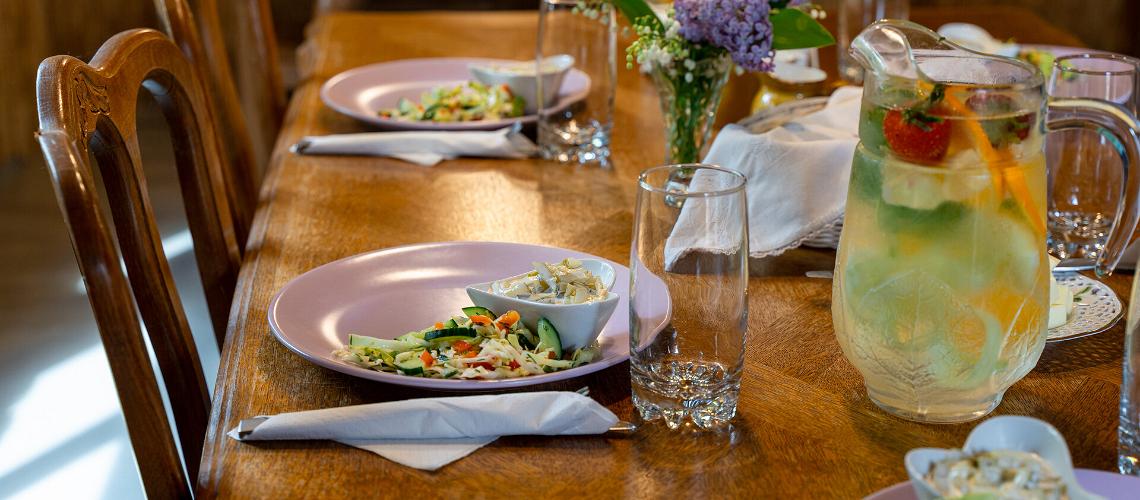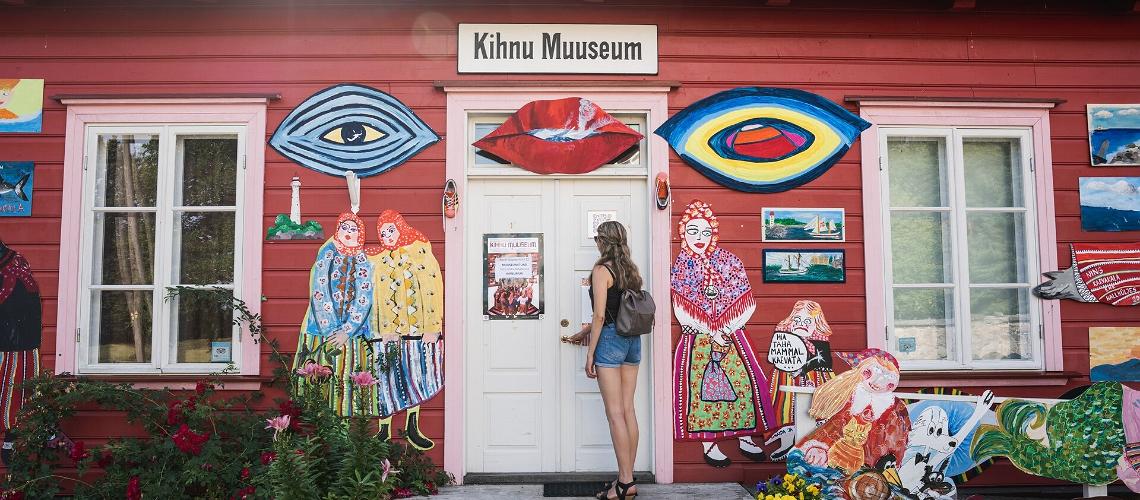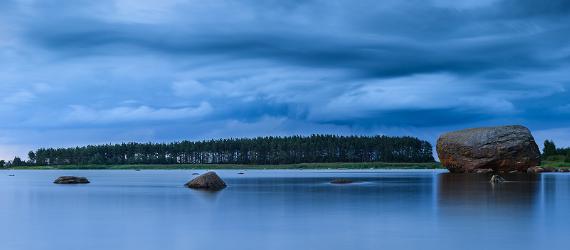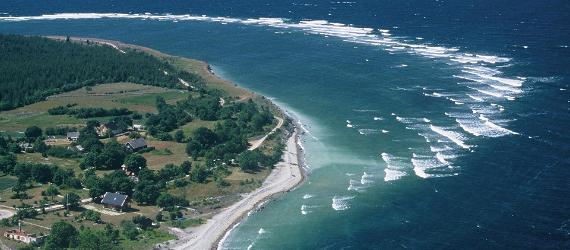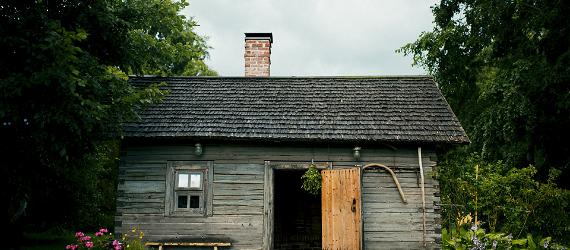Estonia's Isle of Women. Europe's last surviving matriarchy. The island run by women. Headlines hint at Kihnu Island's reputation, but they're not exactly correct.
As fishermen, Kihnu men typically spent months out at sea. Kihnu women stayed behind and out of necessity, bore tremendous responsibility for day-to-day life. They still do. Women keep the farms going and the children growing while men earn a living as fishermen, on commercial shipping boats, or on the mainland. Foreign journalists have latched on to this particular aspect of Kihnu culture, likely because of how strange it seems to find such a set-up within the confines of the modern European Union.
If Kihnu Island isn't a matriarchy, what is it?
Local guide Mare Mätas is quick to note this inaccuracy. Kihnu culture is not a matriarchy, she explains. She points out that men's work is important for sustaining island culture, though their work differs from the women's. Married women hold a higher status, she explains, and divorce isn't common. Before regular ferry service and 5G, men provided a link to far-flung lands, often bringing back new styles of clothing, songs, or even partners for island-bound women. However, their traditional jobs—subsistence fishing, seal hunting, and gathering seabird eggs—and their communal lifestyle don't always align with today's commercial economy.
With the men out at sea or at work on the mainland, women are the keepers of the home, of the farms, of the culture. They build and repair, caretake, and educate. They manage births and bury the dead. During weddings, they spend so long singing, the guests tire of waiting for the party to start.
This is why Mare prefers the term matrifocal, as women keep the gears running on Kihnu Island, literally and figuratively. She says the culture could even be considered egalitarian, as the traditional roles of both men and women are essential to the survival of Kihnu Island's unique culture. However, traditional "women's work"—weaving, knitting, and cooking—is far more suited to the tourism economy Kihnu Island depends on today.
Time-honored traditions and modern tools
Seeing Kihnu women wearing their brightly colored, striped skirts is often a highlight for visitors to the island. Indeed, Mare is wearing one, covered with a floral apron, signifying her status as a married woman. She points out the museum's collection of skirts, describing which colors indicate whether a woman is single or married, or in mourning. She has dozens of skirts in her own wardrobe.
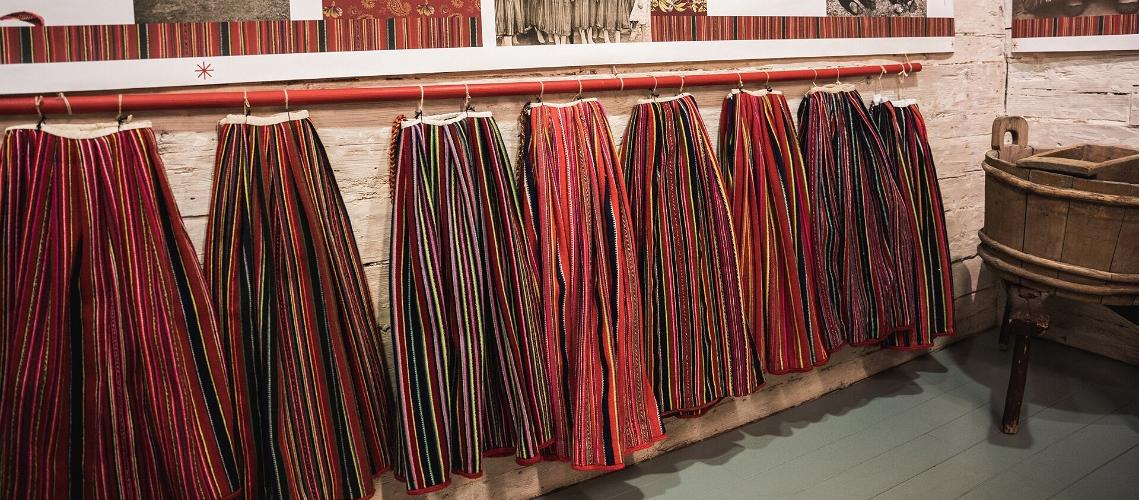
The stripes on a Kihnu islander's skirt signify her status in the community.
A handy pocket is hidden underneath, accessed by a slit in the side, and most women carry a bag with their knitting projects at their waist. Married women wear a colorful cotton apron on top.
The Kihnu cultural space was added to the UNESCO List of Intangible Cultural Heritage in 2008, with the colorful wool skirts, sweaters, and mittens and the wedding ritual featuring prominently in the decision. Kihnu Island was first mentioned as an inhabited island in writing back in the 16th century, and many customs go back further than that. For example, their runic wedding songs date back over 2,000 years, to a pre-Christian time of oral tradition and kinship ties.
Kihnu's culture may be old, but it's not stagnant. Along with her wool skirt, Mare wears an Apple Watch to track her steps and checks her messages throughout the day, which involves coordinating a visit from the film crew accompanying an elderly German woman famous for a cooking channel on YouTube. They are set up outside an old farmhouse, awaiting a concert of traditional music and folk dancing.
One woman sits down with an accordion and another tucks a fiddle under her chin. Two women come flying down the road in a small sedan, obviously late for the concert. They join the others who sing along while keeping their hands busy with knitting. They set their work down only to stand up and dance. The leader introduces the musicians and asks the audience members to introduce themselves, clasping hands with the elderly YouTuber. She teases one German, saying he would make a better football player when he says he's a writer. She invites everyone to join in the dance, though no one dares.
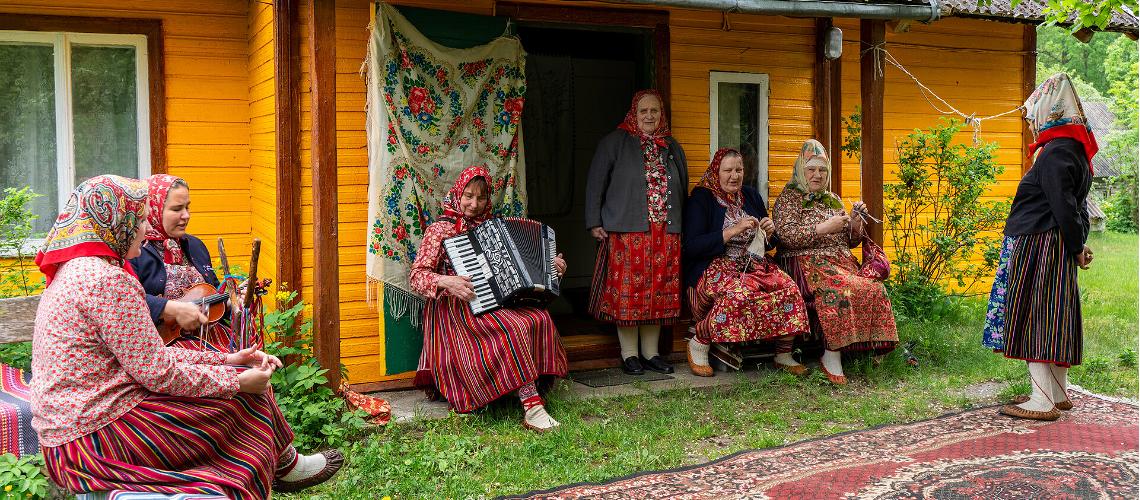
Kihnu Island folk music features the fiddle and accordion, accompanied by the steady click of knitting needles.
Photo by: Martti VoltMare apologizes for the lack of musicians. Normally, several youngsters would be part of the ensemble, showing off the singing and dancing skills they learned in school, but the schoolchildren, all 41 of them, have gone to the mainland for a class trip.
At the island's kindergarten and primary school, students learn folk songs and dances, practice an instrument, and take classes in handicrafts and the Kihnu dialect. Students attend high school on the mainland. One day they may leave the island permanently to live elsewhere, either because they want to or because they have to. This is the biggest threat to preserving Kihnu's unique cultural traditions. It will be up to this younger generation—boys and girls—to keep the Kihnu culture alive.
Tips for a sustainable visit to Kihnu Island
Highland cows graze in the long grass between the rocky shore and the road, some chest-deep in the water. Yellow wildflowers peek out from craggy rocks. Tall pines puncture grey clouds. Lilac bushes line the road and fence off homes. Their petite purple flowers even billow up from the sandy soil next to the lighthouse.
Life on Kihnu Island follows the seasons, as it has for centuries. The types of seasons have changed recently, though; late May is the beginning of the tourist season and arguably just as important as the harvest season.
Mare, straightforward like most Estonians, says she sometimes wishes tourists would simply send money floating down while flying over the island. But she realizes that sharing the island with visitors, at least with those willing to engage with the community, is one way to keep traditions alive.
- Stay for one night, maybe two, maybe more. Spending time on the island, and interacting with locals, whether at a homestay or on guided tours, will help you understand life on Kihnu.
- Travel on two wheels (or two feet!). Soviet-era motorbikes are seldom used anymore, but bicycles are a great way to get around. The island is flat and the roads are good. Plus, Visit Kihnu has created a special self-guided bicycle tour of the island called the Kihnu Travel Wheel. Bigger groups, or those traveling with luggage, can arrange transport in an open-backed truck.
- Eat like a local. That means fish. Fish cutlets, smoked fish, steamed Baltic herring—fish is a staple, as are potatoes, black bread, homemade pickles, jam, and just about anything that can grow in a garden. Food is simple but hearty and made with love.
- Buy handmade. Handicrafts made by Kihnu women are impressive. Kihnu knitters have taught workshops to other knitters from all over the world. Supporting local artists is one way to keep these crafts alive.
Practical details for island visitors
Kihnu Island seems remote, sitting 10 km away from the mainland in the Bay of Riga, but getting there is surprisingly easy. Don't let that fool you; it's best to come prepared and know what to expect when you travel.
When to visit
Every season has something special. But if you hope to experience Kihnu culture in all its glory, then the best time to visit is during one of the annual cultural events. Some of the most popular events are the Baltic Herring Festival in early May, Home Cafe Days on the first weekend of June, Kihnu's Midsummer Celebration, and the Sea Festival in July. Check the local calendar to see what's on when you plan your trip.
How to get to Kihnu Island
A ferry runs from Munalaid, about 30 minutes outside of Pärnu. You can reach the port by bus from the Pärnu bus station. The ferry has all the amenities you could possibly need: WC, a cafe counter selling coffee and snacks, seats indoors or outside on the deck, a children's play area, and a changing table. The trip takes about one hour, and the boat runs in all seasons, including the winter, when it can break through the ice. Book your tickets ahead of time, especially if you plan to go during a special event.
Where to find supplies
There is no ATM on the island, though most places accept card payments or bank transfers. Many stores close during the off-season, but two are open year-round—Kurase Kauplus and Kihnu Pood. When coming outside of the busy summer months, call to check if cafes are open or arrange your meals ahead of time.
What to see
Your first stop should be a visit to Kihnu Museum. The detailed exhibits will provide you with a good understanding of the island's history and culture. You can visit the church across the street if it's open. Climb to the top of Kihnu Lighthouse for a spectacular view.
Kihnu Island is the ideal destination for slow travel. When deciding to visit the island, know that your choices contribute to keeping Kihnu culture alive. Savor simple, home-cooked meals. Try your hand at knitting. Be brave and join the dance. Stop and smell all the flowers, especially the lilacs.















